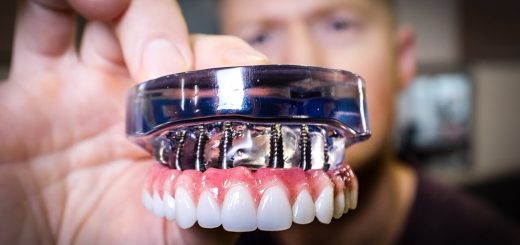Dental Implant: Everything You May Want to Know Before Getting One

Did you have a tooth removed? Are you considering getting a dental implant? If your mind is not made up yet, keep on reading.
This blog post will walk you through every aspect of getting a dental implant. We’ll cover everything you may want to know before deciding to have an endosseous fixture placed.
On the Day of Surgery

Before starting the surgery, the general dentist or oral surgeon will administer local anesthetics to the site via injection. It shouldn’t hurt much. You’ll most probably feel a small pinch in the area where the injection penetrates the gum. Oral surgeons may choose to use intravenous sedation instead of injection.
The local anesthetics will help numb only the idea where the implant will be placed before the procedure starts. Therefore, you will remain conscious throughout the surgery. Even when intravenous (IV) sedation is used, you will remain conscious during the surgery.
Phase One of Surgery
After your mouth has been properly numbed with local anesthesia or IV sedation, the surgical placement of the implant, which is the first part of the surgery, can start. Phase one involves the following:
- The dentist will make an incision in your gum to expose the bone underneath. This is where the implant will go.
- Using a specialized drill, the dentist will create a space for the implant in the exposed bone.
- The implant will then be placed in that space. The dentist will either use a hand tool or the same drill used to create the space in the bone to screw the implant in.
- Once the implant has been safely screwed in place and is snugly in place, a second part will have to be screwed in. This part is added to the implant itself and will stay there until the healing process is completed.
- With one or two stitches, the dentist will close your gum over the implant.
Phase one ends once the gum is closed. You will then be asked to wait for a couple of months so that the implant securely attaches itself to the bone.
Phase Two of Surgery
Over the course of these months, your gum will heal and the implant will have had time to attach to the bone. The second phase of the surgery can then start:
- To start the next stage of the surgery, the implant will have to be exposed again. Re-exposure of the implant is generally done by making a new, small incision in the patient’s gum. This step can be avoided if a separate component (as mentioned in the first stage of the surgery) is indeed attached to the implant that is sitting in the gum.
- To create the crown that will be screwed in the implant, a small extension will be placed on that implant. This extension is used to take an impression that will be used by the lab to fit the new crown.
- Step 3 of this phase will be split into a series of appointments. These appointments are important for your dentist to make a new implant crown for you. While the steps followed during this step may not be the exact same across the board for everyone, the steps will include making an impression of your teeth to make precise working models of your mouth. These models have to be carefully designed and mounted to ensure proper alignment.
- This step involves using the models made during these mini appointments to create a perfect crown for your mouth.
- The surgery ends with the placement of the crown.
Post-Surgery: How Much Downtime Will I Need? How Do I Maintain the Implant?
You’ve had the implant placed, what happens now?
1. Amount of Downtime Needed:
The surgery usually does not take much time to heal. While there will be some small bruises and swelling in the gum and around the implant, it will not take lake long to heal and go down. You would normally be ready to resume work by the following day.
2. Recovery after Oral Surgery:
Even if you are suffering from some discomfort, it is easily treatable. You can get some over the counter medicine. Ordinary painkillers, such as hydrocodone and ibuprofen, should do the trick.
Your dentist will advise you if there are other things you will need to do to ensure a full recovery.
3. Maintaining the Implant
The implant is just like a regular tooth. You’ll need to have good oral hygiene: brush twice a day, floss and visit your dentist regularly. A visit to the deist every six months is generally recommended.
Potential Complications
These are extremely rare. But since there are risks of some complications occurring, we thought it better for you to know about it so you can make an informed decision:
- There is the risk that the surrounding bone and gums get infected.
- Bone loss may occur around the dental implant.
- Your body could reject the dental fixture.
- Your endosseous implant may not adhere to the bone.



